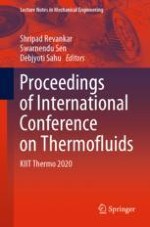2021 | OriginalPaper | Buchkapitel
Analysis of Heat Transfer Coefficient in Turning Process
verfasst von : Ramanuj Kumar, Amlana Panda, Ashok Kumar Sahoo, Deepak Singhal
Erschienen in: Proceedings of International Conference on Thermofluids
Verlag: Springer Singapore
Aktivieren Sie unsere intelligente Suche, um passende Fachinhalte oder Patente zu finden.
Wählen Sie Textabschnitte aus um mit Künstlicher Intelligenz passenden Patente zu finden. powered by
Markieren Sie Textabschnitte, um KI-gestützt weitere passende Inhalte zu finden. powered by
